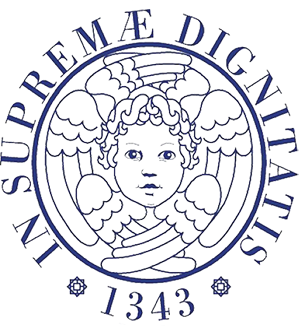Definition:
Ureteroscopy is an instrumental examination that allows a physician to explore the ureter (the small channel from each kidney to the bladder) and the urinary tract inside the kidney (pelvis and calyx). The examination is performed using the ureteroscope, a lens and fiber optic instrument that can be rigid or flexible and which is introduced from the outside through the urinary tract (urethra and bladder).
Indications:
Ureteroscopy is performed when the urologist suspects a ureteral disease and / or internal kidney urinary tract. With this examination, it is possible to ascertain the presence of kidney stones, stenosis (shrinkages), neo formations (“polyps” or tumors), establish the site and size and schedule the most appropriate therapy. Ureteroscopy is performed for diagnostic purposes if previous radiological examinations did not allow for a proper diagnosis. It is also possible to make a biopsy (picking up a piece of tissue to analyze). In cases where a transitory obstacle (for example a stone or stenosis) is encountered, it is possible, under direct vision, to implement mini-invasive maneuvers that sometimes constitute either a temporary or definitive cure of the disease. A small stone can be extracted or a small tube (called tutor or stent or double J) can be introduced that overcomes the narrow channel and allow urine outflow. During ureteroscopy, if necessary, it can be introduced into the urinary tract a contrast substance to show a tract that the ureteroscope can not reach (in this case the patient is subjected to a low dose of radiation).
Technical Description:
In the case more rigid instruments (which allow for greater operationality) it may be necessary to dilate the ureter, especially its bladder outlet. The ureteroscope is introduced very often under the guidance of a thin flexible non-traumatic wire (metallic or non-metallic). This way the doctor has less chance of hurting the wall of the ureter.
After examination it may be necessary, especially if ureteroscopy has become operative, leave an ureteral tutor in place that allows easy transit of urine from the kidney to the bladder and may require further endoscopic examination for its removal. Such ureteral tutors are left inside, even for prolonged periods of time (weeks or, rarely, months) in all those cases where ureteral wall injury occurs or there is an obstacle to urine passage. In rare cases, in men with prostate hypertrophy or in patients with prolonged and traumatic maneuvers, a bladder catheter may be necessary, typically for 24 hours or less. Bleeding of the urinary tract may occur, usually of short duration and mild intensity.
Preparation for intervention:
Ureteroscopy does not require any particular preparation despite the need for certain examinations (ECG, Chest Rx, blood and urine tests), because it is performed in anesthesia.
Immediately before the surgery, an antibiotic is administered to prevent infection.
Duration of intervention:
Ureteroscopy is a procedure of relatively short duration (usually between 10 and 45 minutes). A longer duration of up to 2-3 hours may be necessary if the exam becomes operational.
Type and duration of hospitalization:
Almost always a short hospitalization is enough (Day Hospital in over 80% of cases). A longer stay may seldom be required.
Results:
The method allows a diagnosis in more than 90% of cases.
Advantages:
It avoids unnecessary open surgical examinations and the surgery, when needed, uses more accurate diagnosis than those obtained with radiological examinations.
Disadvantages:
The disadvantage of ureteroscopy, both rigid and flexible, compared with radiological findings to visualize the ureter (urography and ureteropyelography) is to be an invasive maneuver that requires anesthesia in most cases. In about 10% of the cases the examination does not allow a diagnosis or sometimes, even when the diagnosis is made, it is not possible to find a solution within the same session. You will then have to undergo another surgery with an additional anesthesia.
Side effects:
It is possible to have mild hematuria or some irritated bladder symptom in the postoperative period.
Complications:
The complications of diagnostic ureteroscopy are occurring in less than 0.5% of patients and are almost always mild. Urinary infection may occur despite sterility and antibiotic prophylaxis. This can cause malaise, fever, and prolonged hospitalization. Slight ureter injury, when ureteroscopy becomes operational, is a relatively common phenomenon. Bleeding and temporary blockage of urine may occur and may require the placement of an internal tutor for a variable period of time.
In rare cases, serious ureter injury may occur, which, very rarely, requires an open surgery. The urologist may need to intervene in a single anesthesiological time with endoscopic examination.
Operational maneuvers can cause, in 1-2% of cases, a shrinkage of the ureter (stenosis) to obstruct the passage of the urine and require further endoscopic or surgical interventions. Stenosis may become apparent even after months of intervention.
At discharge:
If the patient has not undergone stent placement, after a short period of antibiotic therapy he/she may return to his/her work. In other cases, this can happen more slowly, but always in a short time (maximum 2 weeks).
Hyperhydration is always beneficial for the patient.
How to behave in case of complications arising after discharge:
In the event of a fever, first consult your physician who will understand the source of the fever. If the problem does not resolve, consult the Urological Center.
Checks:
Upon completion of antibiotic therapy (7 days), urinary culture and a first clinical checkup at the hospital center (under the DRG) have to be done. If a stent has been placed, this should be removed within 2-3 weeks. The remaining checks are dictated by the performed diagnosis.

